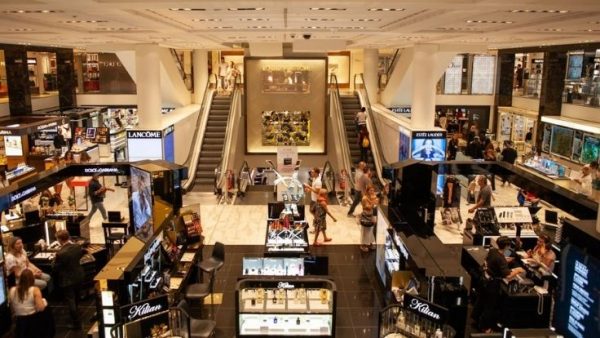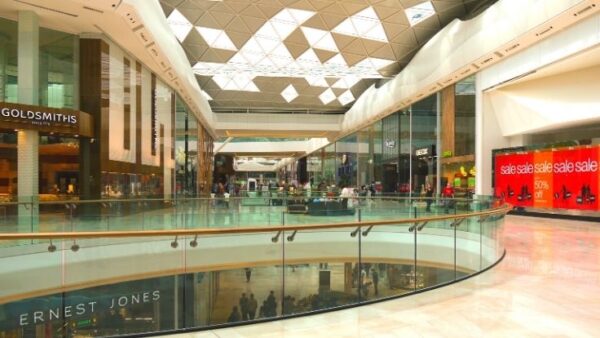Location-based marketing is a rapidly growing marketing strategy, located right in the middle of the advertisement ecosystem.
In most but not all sectors this advanced marketing approach is a perfect fit. Here’s what makes location-based marketing successful and a few pitfalls you’ll need to avoid.
Marketing based on location: Wherever it operates.
Brands with physical locations are the best fit for location-based marketing, which is evident but worth repeating at all times. Such types of businesses are best suited for geotargeting strategies because location-based marketing and analytics firms will geofence locations to identify the audiences visiting their locations. Marketers build audiences for their geo-targeted ads based on real-world experiences, rather than shares and follow on social media. Using this approach, advertisers ensure that they reach the right audience and deliver appropriate content at the right time.
So who will successfully use the geotargeting campaigns? It covers all retail outlets, catering and dining establishments, grocers, and the list goes on. Below are just a few more examples.
Auto dealers
Auto dealers also profit from geotargeting campaigns which can reach customers of their competitors, especially geo-conquesting. In their final phase of visiting auto dealers, their large retail presence, high-value price tag and purchasing process force advertisers to work hard to reach the car shoppers.
Pop-ups and seasonal stores
The businesses and brands with seasonal stores and time-specific events often create impactful geotargeting strategies when they meet the right requirements. Talk of pop-up tax bureaux and holiday shops.
Related Post: Here are 5 Financial Advantages of Hosting Pop up Shops
Marketers for these brands use publics seen at their previous year locations to offer ads to the same audience, enabling return visits the following year. To encourage future ticket purchases, professional and college sports teams use location-based targeting to meet the audiences who visit their stadiums each season. A trade show that takes place in a large venue over several days, attracting thousands of attendees, is an effective way to capture a business-to-business public.

Tourism boards
We have also seen travel and tourism boards use geo-targeted campaigns with success. For example, a marketer who works to encourage tourism in Charleston, SC, may decide to convince Savannah, GA tourists to visit their location next summer instead.
Ecommerce companies
In some cases, marketers at e-commerce firms and consumer packaged goods (CPG) firms can also use location-based marketing. Whether they have physical retail stores or not, eCommerce companies are competing for customers who visit rivals that have shops. Likewise, businesses that stock items in specific stores may use geotargeting for consumer-packaged-goods (CPG). A business with a high-end hair care product that can only be sold at salons should use location-based marketing to target customers who frequent those salons.
Location-based marketing: What to avoid
Those who use every targeting technique know that there are limitations to each strategy and location-based marketing is no different. These restrictions can be in terms of both data quality and quantity, as well as regulatory and compliance limitations.
Locations that don’t scale
The most common obstacle to build an effective location-driven campaign is to discover that places are not going to scale up to create a substantial audience. This difficulty can come from a variety of issues like choosing a single location to examine without heavy foot traffic, events that don’t last long enough to attract the right audience or smaller markets with limited data to start with.
Marketers also sometimes consider location-based audiences difficult when companies are clustered closely together or on top of each other, as in malls or multi-use buildings. It is difficult to create a market for a store located on the street level of an apartment building, or tourists to an office located on a skyscraper’s 12th floor. Marketing and analytics firms based on location may not be able to determine the difference of who is a shopper and who lives or works on the floors above or below the desired location.
Related Post: How IoT Is Revolutionizing The Real Estate Sector
Products or services available everywhere
Recall an example of this high-end hair care product? If it’s only available in certain salons, then ads based on the location will work well. But if it’s available somewhere, the plan would just not work.
Goods that are omnipresent, and can be sold in a variety of locations — think bubble gum, soft drinks, pet food — do not benefit from observations derived from a distance. Such advertisers should use other targeting strategies to reach their customers more efficiently, such as demographics and buying history.
Businesses with sensitive data
Considering the sensitive nature of the data, brands at certain places, such as healthcare facilities, can pose another challenge for location-based campaigns. Compliance companies such as the Network Advertising Initiative, the Digital Advertising Alliance, and TrustArc have membership requirements that stipulate appropriate business practices and how their member firms will treat opt-in authorisations. We play a vital role in providing protections for customers in the absence of robust federal legislation.
Usually, adhering to these codes of conduct, location-based marketing firms do not encourage advertisers to build markets around sensitive areas, especially related to health care, or participate in any discriminatory practices. These same principles apply to the right to personally track or target another person. Marketers have no desire or motive to target one market, but rather large audience cohorts which exhibit similar behaviours or characteristics.

What’s next for location-based marketing?
There are three important elements in the future for location-based marketing: legislation, the emergence of new data sources, and attribution.
The end goal is a standardized structure that voluntarily welcomes both consumers and businesses, and one that gives greater clarity and control over data practices across the entire data ecosystem.
The 5 G rollout would create massive sources of highly accurate location data, combined with the introduction of billions of new sensors over the Internet of Things. The 5 G towers must be more tightly grouped together than the current cell phone towers. Such finer clustering means cell phone carriers can triangulate position with a greater degree of precision than they can do today. 5 G also offers quicker upload and download rates, driving the proliferation of more internet-connected devices across a variety of products and industries. As these billions of sensors come online, they will not only produce location data but also other valuable data sources to track the use, usage and life cycle of goods. It is yet to be determined how advertisers, academics, and regulatory bodies interpret, evaluate, and use the more granular data.
Related Post: 6 Affordable Retailing Alternatives for Small Businesses
Finally, advertisers will be gradually held accountable for their ad spend, requiring evidence that their ad spend results in new foot traffic and sales. We’re a long way from demonstrating that digital ads, and most other advertising formats, have resulted in actual sales in the shop. There are just too many unconnected silos of data to put meaningful and statistically relevant findings together. The ad seen on TV can not tell your phone or laptop that it has also been watched, while the point-of-sale or online checkout system can not alert the prior touchpoints to confirm that the sale has taken place. Given these challenges of tying online ads to offline sales, when using location data, marketers adopt a macroeconomic view of attribution. They assess how their campaigns affect foot traffic at their own locations, as well as competitors, as another data point to measure the effectiveness of their ad spending.
The Last Line? Such improvements are all new opportunities. It is because of its efficiency that advertisers can continue to invest in location-based marketing. Understanding what works and what isn’t the basis for any successful campaign.
Myrsa will help these marketers to easily find temporary rental spaces in high footfall areas. Register your Brand with Myrsa and start your promotional activities now.





















